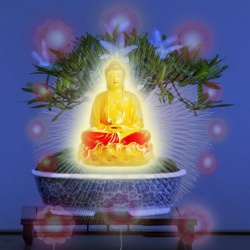Difference between revisions of "Extant Vinaya Recensions"
| Line 6: | Line 6: | ||
[[Dharmaguptaka]] (the {{Wiki|Chinese}} [[ordination]] [[lineage]] is [[Dharmaguptaka]] and those who follow [[Vinaya]] in the {{Wiki|Chinese}} [[tradition]] use the [[Dharmaguptaka]] recension, there is a complete {{Wiki|Chinese}} translation but no [[Sanskrit]] fragments). | [[Dharmaguptaka]] (the {{Wiki|Chinese}} [[ordination]] [[lineage]] is [[Dharmaguptaka]] and those who follow [[Vinaya]] in the {{Wiki|Chinese}} [[tradition]] use the [[Dharmaguptaka]] recension, there is a complete {{Wiki|Chinese}} translation but no [[Sanskrit]] fragments). | ||
[[Sarvastivāda]] ({{Wiki|Chinese}} translation, and also substantial [[Sanskrit]] fragments). | [[Sarvastivāda]] ({{Wiki|Chinese}} translation, and also substantial [[Sanskrit]] fragments). | ||
| − | [[Mūlasarvastivāda]] (the [[ordination]] [[lineage]] of the [[Tibetan]] and part of the [[Japanese]] [[monastic]] [[tradition]] is [[Mūlasarvastivādin]], so the [[Mūlasarvastivādin | + | [[Mūlasarvastivāda]] (the [[ordination]] [[lineage]] of the [[Tibetan]] and part of the [[Japanese]] [[monastic]] [[tradition]] is [[Mūlasarvastivādin]], so the [[Mūlasarvastivādin Vinaya]] is preserved in [[Tibetan]], also preserved in {{Wiki|Chinese}} translation and {{Wiki|Prakrit}}). |
[[Mahāsaṅghika]] ({{Wiki|Chinese}} translation and [[Sanskrit]]). | [[Mahāsaṅghika]] ({{Wiki|Chinese}} translation and [[Sanskrit]]). | ||
[[Mahāsaṅghika-Lokuttaravāda]] ({{Wiki|Chinese}} translation and [[Sanskrit]]). | [[Mahāsaṅghika-Lokuttaravāda]] ({{Wiki|Chinese}} translation and [[Sanskrit]]). | ||
Revision as of 16:03, 26 August 2014
There are seven extant Vinaya recensions:
Theravada (uses the Tipitaka (or Pali Canon), composed in the Pali language).
Dharmaguptaka (the Chinese ordination lineage is Dharmaguptaka and those who follow Vinaya in the Chinese tradition use the Dharmaguptaka recension, there is a complete Chinese translation but no Sanskrit fragments).
Sarvastivāda (Chinese translation, and also substantial Sanskrit fragments).
Mūlasarvastivāda (the ordination lineage of the Tibetan and part of the Japanese monastic tradition is Mūlasarvastivādin, so the Mūlasarvastivādin Vinaya is preserved in Tibetan, also preserved in Chinese translation and Prakrit).
Mahāsaṅghika (Chinese translation and Sanskrit).
Mahāsaṅghika-Lokuttaravāda (Chinese translation and Sanskrit).
Mahīśāsaka (Chinese translation and Sanskrit fragments).
Kaśyāpiya (only the Prātimokṣha-sūtra remains - Chinese and Sanskrit fragments).
See “A Survey of Vinaya Literature” by Charles S. Prebish for details.
